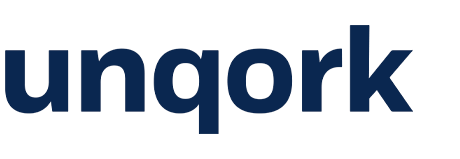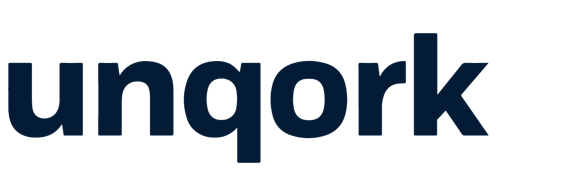Everyone wants to peer into a crystal ball to find out what the new year will bring. But this year, the crystal is particularly murky. Inflation, rising borrowing costs, global conflicts, and supply-chain disruptions are all wildcards that resist hard-and-fast predictions. The only certainty is uncertainty.
When faced with so many negative indicators in the past, business and tech leaders would have slashed investments, battened down the hatches, and waited until the storm was over. However, they are responding very differently this time around. Rather than cutting back on new technology investments, a new CNBC Technology Executive Council survey found that more than 75% of tech leaders expect their budgets to increase next year. Not a single respondent said they were planning to cut spending.
Ready for the next down-turn?
Why such a different attitude this time around? First, decision-makers are far more comfortable with uncertainty than they used to be. From industry-disrupting technologies to pandemics, the pace of change has forced them to make innovation a normal part of doing business.
Second, they have access to a wide range of new technologies that, instead of weighing them down, actually make their organizations more nimble. From AI and predictive analytics to tools like Codeless as Service, they are now able to build agility in core business processes in ways that were simply impossible even a few years ago.
With that in mind, we believe the following trends and technologies are likely to dominate the business and technology landscapes of 2023.
1. Businesses get even more bullish on digitization
Digitization is certainly not a new trend, but it may be surprising that 2023 is shaping up to be a record year. A PwC survey finds executives ready to spend on these efforts, despite the bite that inflation is taking out of their budgets. And three forces are combining to make businesses particularly bullish on the ROI of digitization.
First, studies have consistently shown the value of digital maturity to the bottom line—and a way to lower operating expenses. Second, technologies like cloud, CaaS, and others have significantly lowered the bar to entry for digitization. Third, the massive acceleration of digitization during the COVID pandemic has significantly upped the ante for laggards.
2. Tech talent markets remains tight
Don’t let high-profile layoffs at Meta and Twitter fool you. Demand for skill tech talent is still expected to outpace supply in 2023—especially with the ever-growing appetite for digitization.
“While it is important to follow some of the high profile tech layoffs, they are not indicative of the overall trends in the labor market, or even in the tech sector,” Bledi Taska, Chief Economist at labor market consulting and research firm Lightcast, told CNBC.
The 7 codeless features that developers would never give up
CNBC says other tech firms are actually “hoarding” talent—keeping them employed for the long term, despite short-term pressures to make cuts. And even if there is some slackening in the market now, it is not expected to last. In a study by management consulting firm Korn Ferry, the global shortage of tech workers is expected to reach 85 million 2030.
In short, organizations will be actively looking for solutions that amplify developer productivity. Fortunately, as the next trend demonstrates, new solutions that do just that are already out there.
3. Codeless as a Service elbows past low-code & no-code
Low-code and no-code technologies have been around for more than a decade. Yet during that same time, development timelines actually slowed. These technologies may automate generation of new code, but not at a fast enough pace. And all that automatically generated code still requires long-term maintenance by scarce tech talent.
Unqork & Founder CEO Gary Hoberman on NYSE Floor Talk
The introduction of codeless architecture and, most recently, Codeless as Service (CaaS) fundamentally changes the equation. Codeless as a Service has the potential to be as transformative in development as serverless has been to cloud computing. It empowers enterprises to build, run, and manage next-generation software—all with a single, open data definition. And it has the potential to increase developer productivity up to 3X (or more).
Ready to see codeless in action?
4. Hyperautomation comes into its own
A McKinsey report revealed that 2.6 trillion work hours have been automated in the United States alone. And yet we are just beginning to enter the age of hyperautomation—the practice of automating as many business and technology processes as possible, including process that once seemed to elude automation altogether.

Easy drag-and-drop configuration with Unqork's 100%-visual configuration
To hyperautomate processes, a solution must orchestrate a range technologies, from business applications and data sources to artificial intelligence (AI), event-driven software, and robotic process automation (RPA). In addition, technologies like low-code and especially CaaS, which accelerate development and simplify orchestration, are critical to hyperautomation. They enable organizations to configure and build complex, cross-functional solutions with sophisticated workflows far faster than traditional coding.
5. Data scientists scale insights by building software themselves
Data scientists are rare enough, but those who can turn their algorithms into solutions that generate value are rarer still. And as Steve Hoberman, Data Modeling Author and Lecturer at Columbia University, explains, “The ideas of data modelers are often skewed as they are translated into software by others, much like in a game of Telephone.” As a result, their hard work often ends up sitting on the shelf.
Leaders from Columbia University and Goldman Sachs on maximizing the value of data
6. The metaverse becomes an inevitability
The idea of the metaverse—which TechTarget defines as “a single, shared, immersive, persistent, 3D virtual space where humans experience life in ways they could not in the physical world”— went viral in 2022, and for good reason. McKinsey predicts that it could create $5 trillion in economic value by 2030.
True, we cannot yet step into the metaverse, because it doesn’t really exist yet. But all kinds of platforms are betting big bucks that it will—and that it will be very profitable in the nearish future.
What does that mean for tech decision-makers who are not actually building 3D platforms? 2023 is probably the time to make sure that you are evolving your tech stack to be highly extensible. Then, it can connect as easily and seamlessly as possible when the various metaverses come online.
3X faster development cycles? Yes, please.
7. ESG goes from aspiration to habit
Gartner's 2022 CEO and Senior Business Executive Survey found that environmental sustainability was the third largest driver, behind performance and quality, among the 80% of CEOs planning to invest in new products through 2023.
While there has been some pushback against ESG, the adoption of sustainability practices—and the ability to measure and report on them—is expected to grow in 2023. And as PwC reports, investors prize clarity of reporting about the initiatives companies are undertaking.
Yes, 2023 is likely to be full of a complex set of business and technological challenges, as well as the usual unknown unknowns (who predicted the metaverse as a top trend for 2022?)? However, leaders who support agility across people, processes, and technologies have the greatest chance of success, whatever the new year brings.







